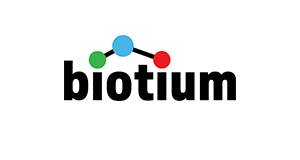CLEC9A / DNGR1 (Dendritic Cell Marker)(8F9), CF740 conjugate, 0.1mg/mL
CLEC9A / DNGR1 (Dendritic Cell Marker)(8F9), CF740 conjugate, 0.1mg/mL
Artikelnummer
BTMBNC743063-100
Verpackungseinheit
100 uL
Hersteller
Biotium
Verfügbarkeit:
wird geladen...
Preis wird geladen...
Description: This MAb recognizes a protein of 27 kDa, identified as CLEC9A (C-type lectin domain family 9 member A). Its epitopes maps in aa 50-110. The C-type lectin/C-type lectin-like domain (CTL/CTLD) superfamily consists of a variety of proteins that share a common protein fold and have diverse functions, including cell-cell signaling, cell adhesion, glycoprotein turnover and immune responses. CLEC-9A, also known as DNGR1 (dendritic cell natural killer lectin group receptor 1), is a 241 amino acid single-pass type II membrane protein that contains one C-type lectin domain and belongs to the CTL/CTLD superfamily. Expressed in myeloid lineage cells, brain, spleen and thymus, CLEC-9A is a group V C-type lectin- like receptor (CTLR) that acts as an activation receptor. Primary antibodies are available purified, or with a selection of fluorescent CF® Dyes and other labels. CF® Dyes offer exceptional brightness and photostability. Note: Conjugates of blue fluorescent dyes like CF®405S and CF®405M are not recommended for detecting low abundance targets, because blue dyes have lower fluorescence and can give higher non-specific background than other dye colors.
Product origin: Animal
Conjugate: CF740
Concentration: 0.1 mg/mL
Storage buffer: PBS, 0.1% rBSA, 0.05% azide
Clone: 8F9
Immunogen: RBL-2H3 cells expressing human DNGR-1 fused to an HA epitope
Antibody Reactivity: CLEC9A/DNGR1
References: Note: References for this clone sold by other suppliers may be listed for expected applications.
Entrez Gene ID: 283420
Expected AB Applications: Flow, surface (published for clone)/IF (published for clone)
Z-Antibody Applications: Flow, surface (published)/IF (published)
Antibody Application Notes: ELISA: For coating, order antibody without BSA; Flow cytometry: 0.5-1 ug/million cells; Immunofluorescence: 0.5-1 ug/mL; Optimal dilution for a specific application should be determined./Higher concentration may be required for direct detection using primary antibody conjugates than for indirect detection with secondary antibody
Product origin: Animal
Conjugate: CF740
Concentration: 0.1 mg/mL
Storage buffer: PBS, 0.1% rBSA, 0.05% azide
Clone: 8F9
Immunogen: RBL-2H3 cells expressing human DNGR-1 fused to an HA epitope
Antibody Reactivity: CLEC9A/DNGR1
References: Note: References for this clone sold by other suppliers may be listed for expected applications.
- J Clin Invest (2008) 118(6):2098-2110. (IF, Flow)
- Clinical Translational Immunol (2016) 5:e57. (Flow)
Entrez Gene ID: 283420
Expected AB Applications: Flow, surface (published for clone)/IF (published for clone)
Z-Antibody Applications: Flow, surface (published)/IF (published)
Antibody Application Notes: ELISA: For coating, order antibody without BSA; Flow cytometry: 0.5-1 ug/million cells; Immunofluorescence: 0.5-1 ug/mL; Optimal dilution for a specific application should be determined./Higher concentration may be required for direct detection using primary antibody conjugates than for indirect detection with secondary antibody
| Artikelnummer | BTMBNC743063-100 |
|---|---|
| Hersteller | Biotium |
| Hersteller Artikelnummer | BNC743063-100 |
| Verpackungseinheit | 100 uL |
| Mengeneinheit | STK |
| Reaktivität | Human |
| Klonalität | Monoclonal |
| Methode | Immunofluorescence, Flow Cytometry |
| Isotyp | IgG2a kappa |
| Wirt | Mouse |
| Konjugat | Conjugated, CF740 |
| Produktinformation (PDF) | Download |
| MSDS (PDF) | Download |

 English
English







